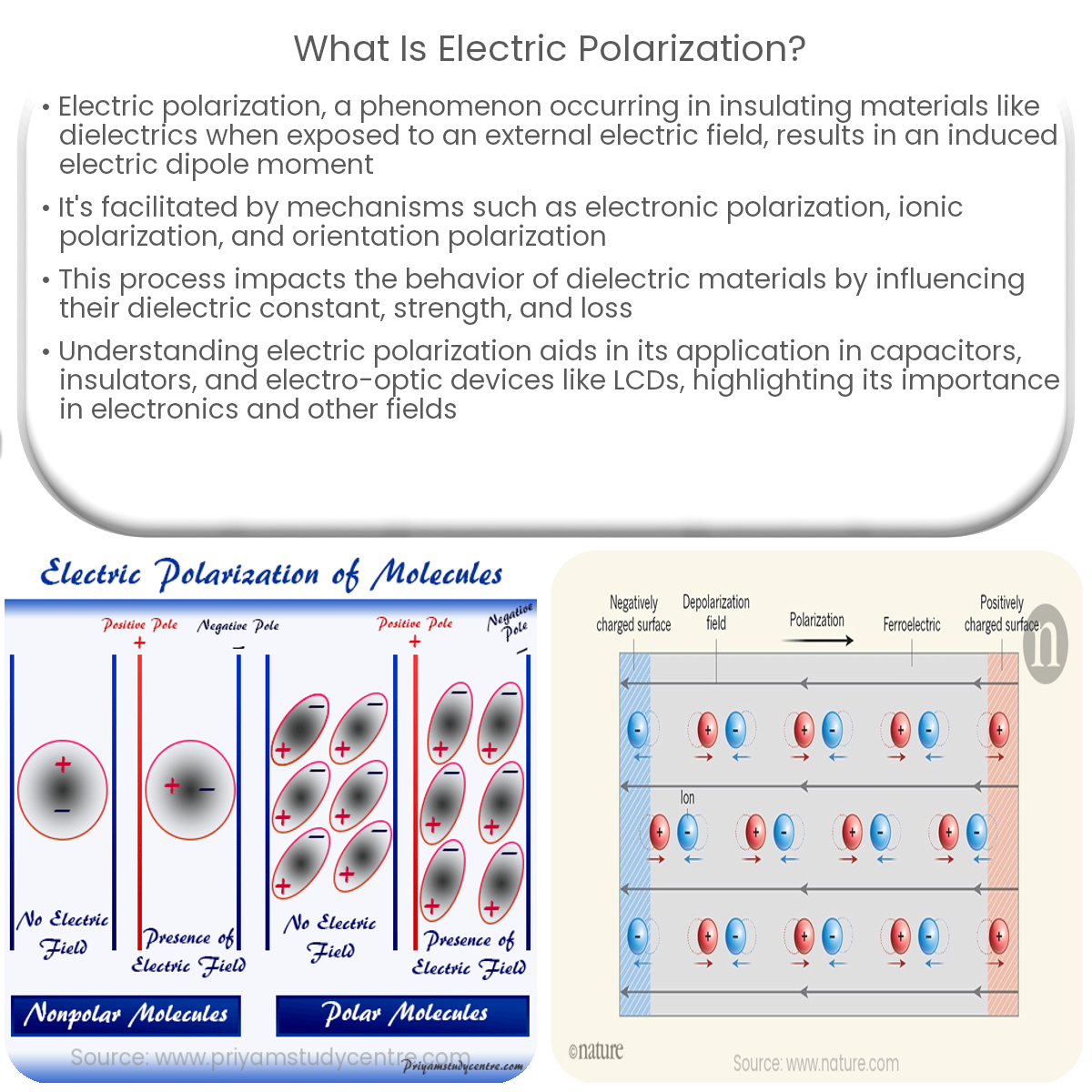Electric polarization occurs in dielectrics when an external electric field causes a slight displacement of charges, inducing an electric dipole moment.
Introduction to Electric Polarization
Electric polarization is a phenomenon that occurs in insulating materials, such as dielectrics, when they are exposed to an external electric field. In this article, we will discuss the concept of electric polarization, its mechanisms, and its effects on the behavior of dielectric materials.
Electric Polarization in Dielectric Materials
Dielectric materials are insulating substances that do not conduct electric current. When a dielectric is subjected to an external electric field, the electric charges within the material undergo a slight displacement, resulting in an induced electric dipole moment. This process is called electric polarization.
Mechanisms of Electric Polarization
There are several mechanisms responsible for electric polarization in dielectric materials:
- Electronic Polarization: When an external electric field is applied, the negatively charged electrons in the material are displaced relative to the positively charged atomic nuclei, creating an induced dipole moment.
- Ionic Polarization: In ionic crystals, the external electric field causes a displacement of cations and anions relative to each other, resulting in induced dipole moments.
- Orientation Polarization: In materials with permanent electric dipoles, such as polar molecules, the external electric field aligns the dipoles, leading to a net polarization.
Effects of Electric Polarization
Electric polarization has several effects on the behavior of dielectric materials:
- Dielectric Constant: The dielectric constant (relative permittivity) of a material is a measure of its ability to store electrical energy in the presence of an electric field. A higher dielectric constant indicates a greater degree of electric polarization.
- Dielectric Strength: Dielectric strength is the maximum electric field a material can withstand without undergoing electrical breakdown. Polarization contributes to the dielectric strength by reducing the effective electric field within the material.
- Dielectric Loss: Dielectric loss refers to the dissipation of energy as heat when a dielectric material is subjected to an alternating electric field. The loss is attributed to the movement of dipoles and the relaxation of polarization.
Applications of Electric Polarization
Understanding and utilizing electric polarization has numerous applications, including:
- Capacitors: Dielectric materials with high dielectric constants are used in capacitors to store electrical energy more efficiently.
- Insulators: Materials with high dielectric strength are used as insulators to prevent electrical discharge and protect electronic components.
- Electro-optic Devices: The interaction between electric fields and polarized materials is used in various electro-optic devices, such as liquid crystal displays (LCDs).
In conclusion, electric polarization is a critical phenomenon in dielectric materials that helps us understand their behavior and properties, enabling a wide range of applications in electronics and other fields.


